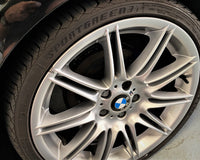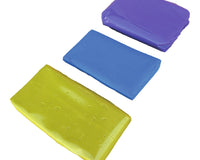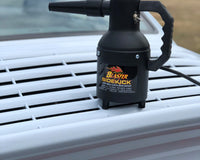In the world of car detailing, brushes play an essential role in reaching tight spaces, loosening grime, and preserving various surfaces in a vehicle. However, not all brushes are created equal, and using the wrong brush on a surface can result in scratches, damage, or ineffective cleaning. Selecting the right detailing brush for each surface of your car ensures a thorough, safe, and high-quality clean.
Here’s an in-depth guide to choosing the perfect detailing brushes for different areas of your vehicle.
Understanding the Importance of Different Brush Materials
Detailing brushes come in various materials, each suited to specific surfaces. The type of bristles on a brush can determine its suitability for a particular surface, as different bristles offer distinct levels of stiffness and gentleness.
1. Natural Bristles: These are softer and ideal for delicate surfaces like leather or polished metal. Brushes made from natural fibres, such as boar hair, are effective at loosening dust and dirt without being abrasive.
2. Synthetic Bristles: Made from materials like nylon, synthetic bristles are typically stiffer, which makes them suitable for areas that need heavy-duty cleaning, such as carpets, rubber mats, and engine bays.
3. Microfibre Brushes: Microfibre is another option, particularly for sensitive areas like touchscreen displays or glossy plastic. Microfibre bristles gently remove dust without scratching or leaving lint.
Choosing a brush material based on the surface ensures you’re able to clean effectively while minimising the risk of scratches and abrasions.
Choosing Brushes for Interior Surfaces
Brushes for Leather Seats and Upholstery
Leather seats require a delicate approach, so selecting a brush with soft, natural bristles is essential. Brushes made from boar hair or other natural fibres offer a gentle touch, allowing you to loosen dirt embedded in leather’s grain without damaging the material.
To use a leather brush effectively, pair it with a pH-balanced leather cleaner, moving the brush in gentle circular motions. Avoid pressing too hard, as excess pressure can lead to unwanted scratches on the leather. Regularly using a soft-bristled brush can keep leather upholstery looking fresh while preventing wear over time.
Cleaning Carpets and Fabric Seats
Carpets and fabric seats benefit from stiffer synthetic bristle brushes that can lift dirt and debris embedded deep within the fibres. Nylon bristles are a great choice here, as they are durable and can withstand the pressure needed to loosen stubborn dirt.

For effective cleaning, use a short-bristled nylon brush that provides control and precision, allowing you to work on specific areas. A wider, larger brush is better for extensive carpet surfaces, helping you cover more area efficiently. Applying a fabric cleaner before brushing helps dissolve grime and makes it easier to vacuum away once brushed.
Detailing Brushes for Dashboard, Vents, and Electronics
The dashboard, vents, and electronics are sensitive surfaces that require a gentler approach. Soft-bristled natural brushes or microfibre brushes are ideal for these areas, as they prevent scratches on delicate plastic surfaces and electronic screens.
For best results, use a narrow brush that can fit into tight spaces, particularly for air vents. A quality microfibre brush can be used for digital displays to avoid static and reduce the risk of scratches. Always ensure that your brush is dry and free of any abrasive particles, especially when working with sensitive screens.
Selecting Brushes for Exterior Surfaces
Wheel and Tyre Brushes
Wheels and tyres endure a significant amount of road grime, brake dust, and dirt. For tyres, you’ll need a stiff-bristled brush, typically nylon, to scrub effectively. This helps lift heavy grime from the rubber and ensures a thorough clean that removes even embedded dirt.
For wheels, however, a more nuanced approach is needed. Use a softer brush for the wheel face to avoid scratching the finish, especially on alloy wheels. Detailing brushes with soft bristles are also great for intricate wheel designs, helping you clean around the spokes, lug nuts, and other hard-to-reach areas.
Cleaning Chrome and Metal Accents
Chrome and metal accents, often found on grilles, trims, and logos, require a gentle touch to avoid scratches. A soft-bristled brush or a microfibre brush is ideal for these areas, as they help remove grime while maintaining the shine of the metal.
Avoid using harsh synthetic bristles, which can create micro-scratches on the polished surfaces. Pair the brush with a metal-safe cleaner to enhance shine and prevent oxidation, and work in small, circular motions to achieve an even polish without damaging the surface.
Detailing Brushes for Paintwork and Body Panels
Although most detailing brushes are not designed for extensive use on paintwork, they can still be useful for detailing around badges, emblems, and seams. For this purpose, a soft-bristled brush with gentle synthetic or natural fibres works best, as it helps remove dirt without scratching the paint.
Avoid applying excessive pressure, and consider dampening the brush slightly for better lubrication. Brushes designed specifically for intricate paintwork are ideal for safely cleaning these detailed areas, especially when combined with a quality detailing spray to keep the paint’s finish intact.
Choosing Brushes for Engine Bay Cleaning
Engine bays can be particularly challenging due to the accumulation of grease, oil, and dirt. For this area, you’ll need a durable, heavy-duty brush with stiff synthetic bristles that can withstand exposure to chemicals and grime.
Choose a brush with a long handle to reach deep into the engine bay without needing to manoeuvre too closely to moving or hot parts. Ensure that you use an appropriate cleaner and be mindful of electrical components when working with engine bay brushes.
Brush Care and Maintenance for Longevity
Proper brush maintenance is essential for ensuring longevity and effectiveness. After each use, rinse your brushes with water to remove any cleaning solution or residue. Allow the brushes to dry completely before storing to avoid mould growth, particularly with natural fibre brushes.
Storing brushes in a dedicated container can prevent contamination and reduce the risk of transferring dirt or chemicals between different areas of the car. Regularly clean and inspect brushes to maintain their performance and prevent any bristle damage that could affect the surfaces you are working on.
Conclusion: Investing in the Right Brushes for Professional Results
Choosing the right detailing brushes for each surface on your vehicle is key to achieving professional, scratch-free results. From soft, natural bristles for delicate interiors to heavy-duty synthetic brushes for tyres and engine bays, understanding the purpose of each brush helps ensure your car remains in pristine condition.
Investing in a range of high-quality brushes suited to each area of your car not only saves time but also enhances the outcome of your detailing efforts, keeping your vehicle looking immaculate while preserving the finish and integrity of each surface.




